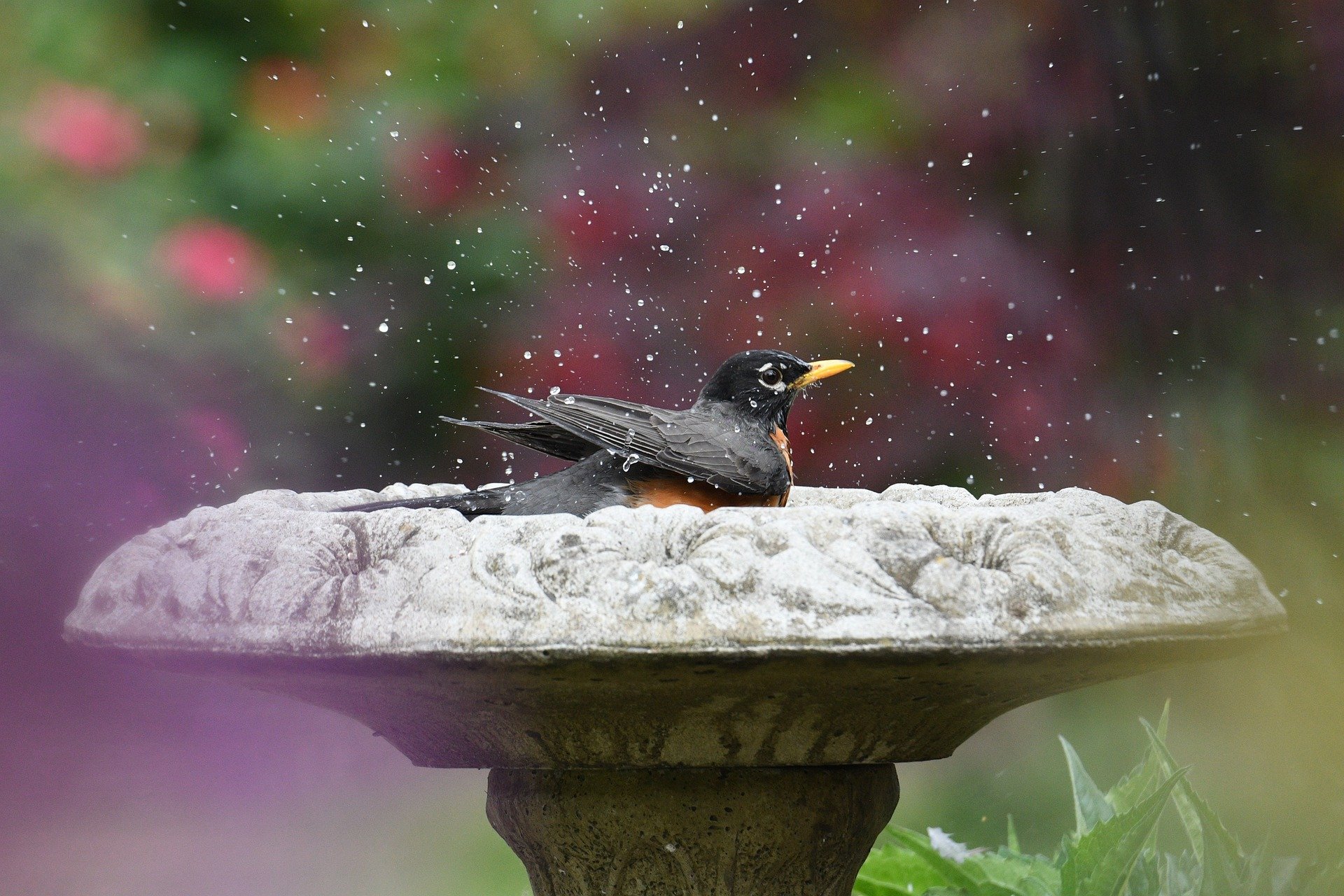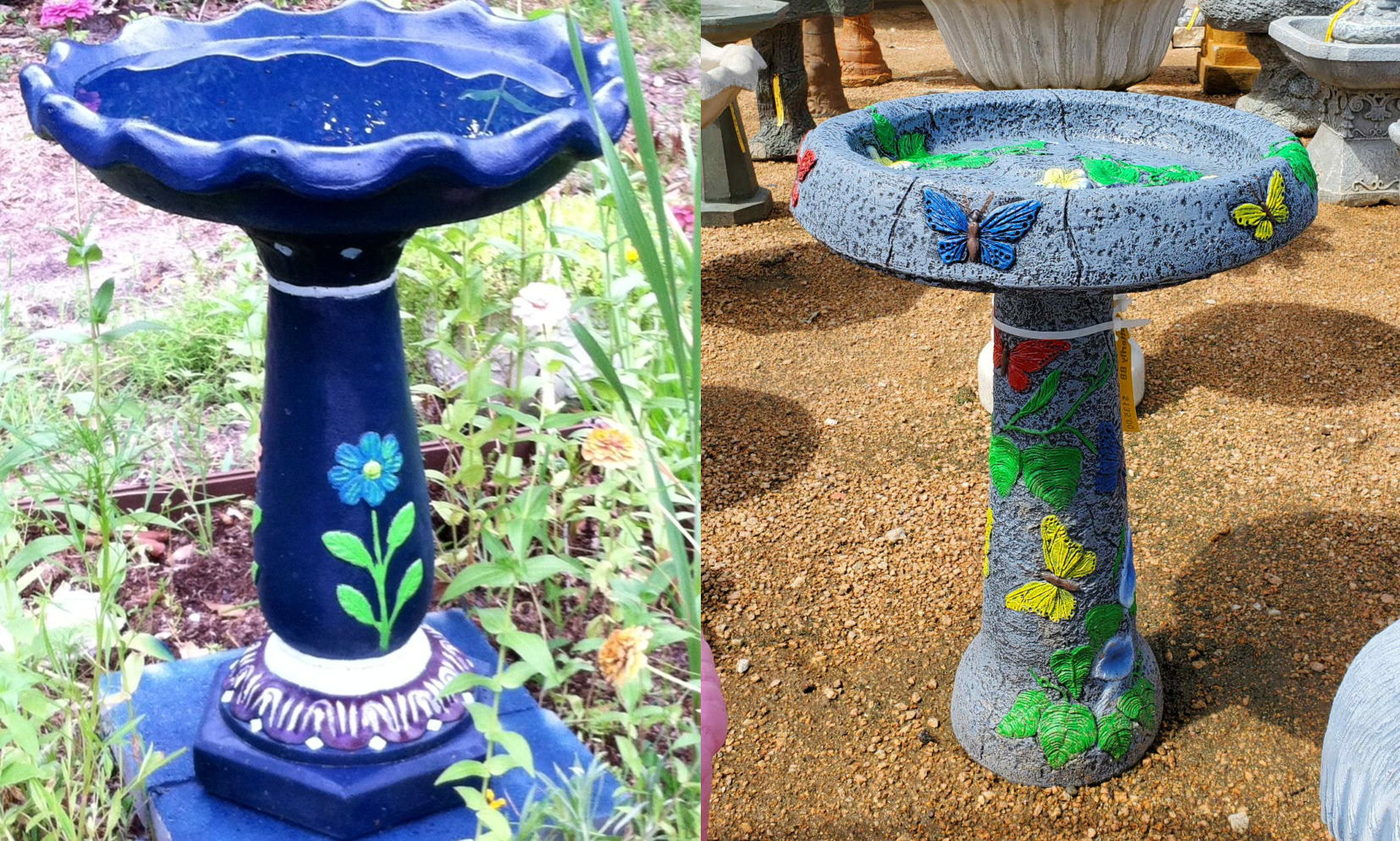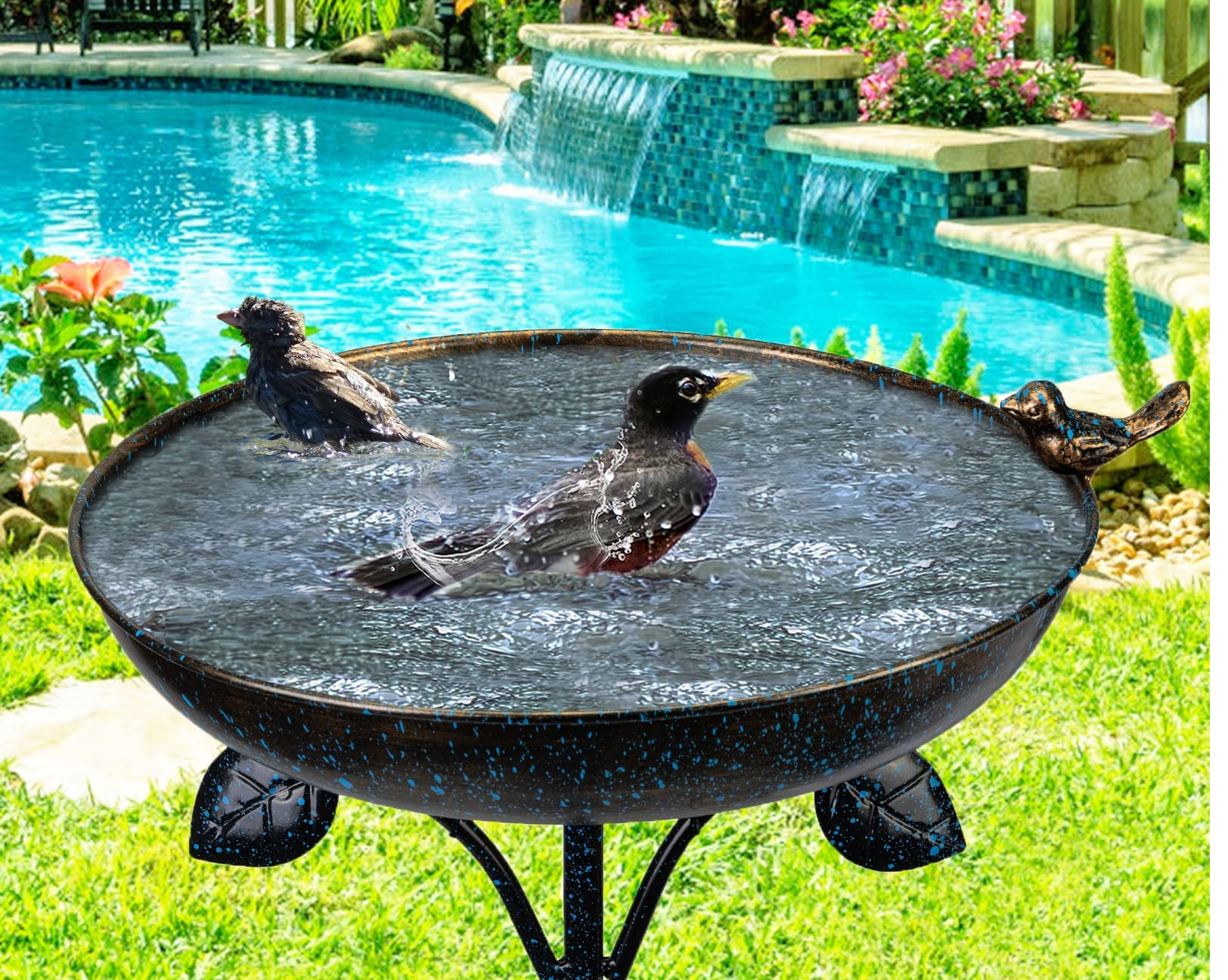Best Non Toxic Concrete Sealer For Bird Bath In 2024
Discover the ultimate solution for your bird bath with our non toxic concrete sealer for bird bath! Ensure safety for your feathered friends while protecting your bird bath from wear and tear. Find out why our sealer is a must-have for bird enthusiasts today.
Author:Suleman ShahReviewer:Han JuDec 21, 202482.6K Shares1.1M Views

Elevate your bird bath experience with our revolutionary non-toxic concrete sealer,designed to safeguard both your avian companions and the environment. Unlike traditional sealers laden with harmful chemicals, our solution offers a safer alternative without compromising on performance. Imagine watching your feathered friends splash and play without worry, knowing they're enjoying clean, toxin-free water.
Choose non-toxic concrete sealer, ideal for both indoor and outdoor applications, these sealers enhance the appearance of concrete while prioritizing the well-being of your family, environment, peace of mind and sustainable protection that lasts.
Bird Bath Paint
Paints To Avoid
Lead-based paints -These paints are highly toxic and should never be used on bird baths or any other object that birds may come into contact with.
Oil-based paints -These paints can release harmful fumes and are not recommended for use on bird baths.
Spray paints -While some spray paints may be labeled as "non-toxic," it's best to avoid them altogether due to the potential for inhaling fumes.
Waterproof Paint For Bird Bath
Acrylic or latex paints -These remain top contenders for their safety and water resistance, especially when labeled "bird-safe" or "non-toxic" and outdoor-rated.
Bilge paint -Specifically designed for boats, this paint excels in water resistance and mildew prevention, making it ideal for the interior basin where water sits. Remember to choose a non-toxic formula and ensure it fully dries before refilling the bird bath.
Epoxy paints -Known for their exceptional durability and waterproofing, epoxy paints are a solid choice for long-lasting protection. Opt for water-based or low-VOC formulas for bird safety.
Best Color For Bird Bath
Prioritize non-toxic paints or sealants -Choose acrylic, latex, or bilge paints specifically labeled "bird-safe" or "non-toxic." When selecting a color for a bird bath, it's essential to consider both aesthetic appeal and functionality. Here are some considerations for choosing the best color:
1. Natural Tones -Opting for colors that mimic natural elements such as stone, earth tones, or shades of green can blend seamlessly into outdoor environments and provide a more natural appearance.
2. Light Blue or Turquoise - Birds are often attracted to water sources that resemble bodies of water, such as ponds or streams. Light blue or turquoise colors can create the illusion of water, making the bird bath more appealing to birds and encouraging them to use it for bathing and drinking.
3. Contrasting Colors -Using contrasting colors can help the bird bath stand out in the garden or yard, making it easier for birds to locate. Consider using bright or vibrant colors such as red, yellow, or orange to add visual interest and attract attention.
4. UV Resistant -Regardless of the color chosen, ensure that the paint or finish used on the bird bath is UV resistant. This will help prevent fading over time and maintain the attractiveness of the color.
Safe Paint For Bird Baths
Safe Options
- Epoxy paints -Known for their exceptional durability and waterproofing, epoxy paints are a solid choice for long-lasting protection. Opt for water-based or low-VOC formulas for bird safety.
- Milk paint - This natural, non-toxic paint is a great eco-friendly choice. However, it might not be as water-resistant as other options.
Is Rustoleum Spray Paint Safe For Bird Baths?
Unfortunately, Rustoleum spray paint is not generally considered safe for use on bird baths, even if it's labeled as "non-toxic". Here's why:
Reasons to avoid rustoleum spray paint for bird baths:
- Fumes -Even spray paints labeled "non-toxic" can release harmful fumes during application and drying. Birds have sensitive respiratory systems and are vulnerable to inhaling these fumes.
- Chemicals -Many spray paints, including Rustoleum, contain solvents and other chemicals that can leach into the water and potentially harm birds if ingested.
- Durability -Spray paints might not be as durable as other options like acrylic or epoxy paints, especially when exposed to sunlight and water. Flaking or chipping paint could further endanger birds.
Acrylic Paint For Bird Bath
Acrylic paint is a great choice for painting your bird bath, as long as you choose the right kind and follow some safety precautions. Here's what you need to know:
Safe acrylic paints for bird baths
- Water-based -Avoid solvent-based acrylic paints, as these can contain harmful chemicals. Water-based acrylics are generally safer for both birds and the environment.
- Non-toxic and outdoor-rated -Look for paints specifically labeled as "bird-safe" or "non-toxic" and formulated for outdoor use. These paints will not leach harmful chemicals into the water or release toxic fumes that can harm birds.
Bilge Paint For Bird Bath
While bilge paint can be a good option for the inside of the basin where water sits in a bird bath, there are some important things to consider before using it:
Pros
- Highly water-resistant -Bilge paint is specifically designed for boats and marine applications, making it excellent at resisting water and mildew. This is crucial for the inside of a bird bath.
- Durable -Bilge paint is known for its durability, ensuring it lasts longer than other options in wet environments.
Cons
- Safety concerns -Even non-toxic bilge paint may contain chemicals that, while not acutely harmful, could potentially leach into the water and impact birds if ingested. Opting for paints specifically labeled "bird-safe" can minimize this risk.
- Unintended consequences -The fumes of even "non-toxic" bilge paint can still irritate birds' respiratory systems. Ensure thorough drying and ventilation before allowing birds near the painted area.
- Not ideal for the entire structure -Bilge paint is typically thick and can leave a rough texture. It's best for the basin where birds don't perch or touch. Use non-toxic acrylic or latex paints for other areas.
Bird Bath Sealer
Here are some of the benefits of using a bird bath sealer:
1. Protects from the elements -Sealers can help to protect your bird bath from sun damage, rain, and freezing temperatures. This can help to extend the lifeof your bird bath and keep it looking new.
2. Makes cleaning easier -Sealed bird baths are easier to clean than unsealed ones. This is because dirt and debris will not adhere to the sealed surface as easily.
3. Prevents algae and mildew growth -Algae and mildew can make your bird bath look unsightly and can also be harmful to birds. Sealers can help to prevent the growth of these organisms by creating a barrier on the surface of the bird bath.
Types Of Bird Bath Sealers
There are two main types of bird bath sealers:
- Penetrating sealers - These sealers soak into the pores of the material, creating a barrier that protects from the inside out. They are a good choice for concrete and terracotta bird baths.
- Topical sealers -These sealers create a film on the surface of the material. They are a good choice for metal and plastic bird baths.
How To Seal A Concrete Bird Bath?
Here's a detailed guide on sealing a concrete bird bath:
Preparation
- Clean thoroughly -Remove all dirt, algae, and mildew from the bird bath using a stiff brush and warm soapy water. Rinse thoroughly and allow to dry completely (at least 24 hours).
- Repair cracks and holes -If there are any cracks or holes, fill them with a concrete patching compound designed for outdoor use. Allow the patch to dry completely according to the manufacturer's instructions.
Choosing The Right Sealer
- Penetrating sealers -These soak into the concrete, creating a water-resistant barrier from within. Ideal for concrete bird baths, offering protection from water damage, freezing temperatures, and efflorescence (white mineral deposits).
- Topical sealers -These form a layer on the surface of the concrete, repelling water and protecting against stains and mildew. They offer less deep protection than penetrating sealers but provide a glossy finish.
What Can I Use To Seal A Concrete Bird Bath?
Non-Toxic And Safe Choices
- Food-safe mineral oil -While not the most durable option, it's a natural, bird-safe choice for a light seal. Reapply frequently.
- Acrylic penetrating sealers -These offer strong water repellency and are generally considered safe for birds when labeled "non-toxic." Opt for water-based or low-VOC formulas.
- Siloxane-based sealers -These penetrate deep into the concrete, providing excellent water resistance and protection from freeze-thaw damage. Choose a water-based formula labeled **"bird-safe" or "non-toxic."
Is Thompson Water Seal Safe For Bird Baths?
- Non-specific "bird-safe" label -While some variations of Thompson's Water Seal might be labeled "non-toxic," this doesn't necessarily guarantee safety for birds. The specific chemicals used might still be harmful if ingested or inhaled by birds.
- Fumes and off-gasing -Even "non-toxic" labels don't always address potential issues with fumes and off-gasing during application and drying. These fumes can irritate birds' respiratory systems, especially in enclosed spaces like a bird bath.
- Limited information on bird safety -Thompson's Water Seal doesn't explicitly state its safety for birds on their website or product information. This lack of specific confirmation raises concerns about its suitability for bird baths.
How Deep Should A Bird Bath Be?
The ideal depth for a bird bath depends on the size and type of birds you want to attract:
Small Birds
- Ideal depth -2 - 5 cm (0.8 - 2 inches)
- Reasoning -Shallow water allows small birds to comfortably bathe and drink without risking drowning. Providing perching areas alongside the shallow water is helpful.
Larger Birds
- Ideal depth -5 - 10 cm (2 - 4 inches)
- Reasoning -Slightly deeper water can accommodate larger birds, but ensure there are shallow areas or perches close by for them to safely enter and exit.
General Tips
- Avoid deep baths -Depths exceeding 10 cm (4 inches) can be dangerous for smaller birds.
- Sloped sides -Gradual slopes allow birds to easily enter and exit the water at different depths.
- Multiple depths -Consider creating a bird bath with varying depths to cater to a wider range of birds.
- Placement -Position the bird bath in a sheltered area with fresh water and nearby vegetation for added comfort and safety.
FAQ's About Non Toxic Concrete Sealer For Bird Bath
What Can I Seal A Concrete Bird Bath With?
If you are not looking to change the look or appearance of the birdbath or fountain, a penetrating concrete sealer is going to be an excellent choice. The Siloxa-Tek 8510 is the deepest penetrating, highest performing and longest lasting penetrating concrete sealer.
Is There A Non Toxic Concrete Sealer?
Acri-Soy™ Penetrating Wood Sealer & Concrete Sealer is a 100% non-toxic clear water repelling sealant.
Is Silicone Sealant Safe For Bird Baths?
We've had success sealing cracks in birdbaths with clear waterproof silicone glue. It comes in a tube and is available at most hardware or home improvement stores. It's safe for home use.
Conclusion
Investing in a non-toxic concrete sealer for your bird bath isn't just about protecting a piece of garden decor it's about safeguarding the healthand well-being of the birds that rely on it for hydration and cleanliness. By opting for a solution that prioritizes safety and environmental sustainability, you're making a conscious choice to create a harmonious space where nature can thrive.

Suleman Shah
Author
Suleman Shah is a researcher and freelance writer. As a researcher, he has worked with MNS University of Agriculture, Multan (Pakistan) and Texas A & M University (USA). He regularly writes science articles and blogs for science news website immersse.com and open access publishers OA Publishing London and Scientific Times. He loves to keep himself updated on scientific developments and convert these developments into everyday language to update the readers about the developments in the scientific era. His primary research focus is Plant sciences, and he contributed to this field by publishing his research in scientific journals and presenting his work at many Conferences.
Shah graduated from the University of Agriculture Faisalabad (Pakistan) and started his professional carrier with Jaffer Agro Services and later with the Agriculture Department of the Government of Pakistan. His research interest compelled and attracted him to proceed with his carrier in Plant sciences research. So, he started his Ph.D. in Soil Science at MNS University of Agriculture Multan (Pakistan). Later, he started working as a visiting scholar with Texas A&M University (USA).
Shah’s experience with big Open Excess publishers like Springers, Frontiers, MDPI, etc., testified to his belief in Open Access as a barrier-removing mechanism between researchers and the readers of their research. Shah believes that Open Access is revolutionizing the publication process and benefitting research in all fields.

Han Ju
Reviewer
Hello! I'm Han Ju, the heart behind World Wide Journals. My life is a unique tapestry woven from the threads of news, spirituality, and science, enriched by melodies from my guitar. Raised amidst tales of the ancient and the arcane, I developed a keen eye for the stories that truly matter. Through my work, I seek to bridge the seen with the unseen, marrying the rigor of science with the depth of spirituality.
Each article at World Wide Journals is a piece of this ongoing quest, blending analysis with personal reflection. Whether exploring quantum frontiers or strumming chords under the stars, my aim is to inspire and provoke thought, inviting you into a world where every discovery is a note in the grand symphony of existence.
Welcome aboard this journey of insight and exploration, where curiosity leads and music guides.
Latest Articles
Popular Articles

